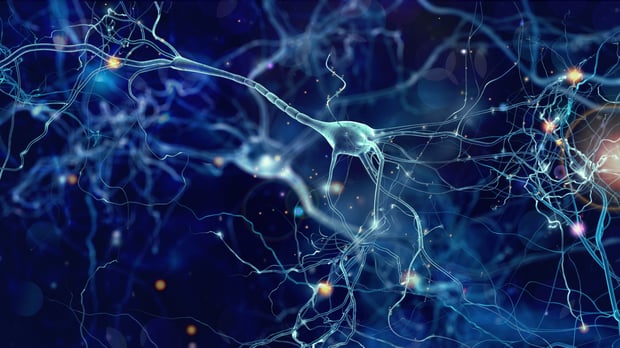Neurodegenerative diseases (NDs) are disorders caused by de progressive and irreversible destruction of the nervous tissue that produces memory and cognitive impairments, movement, breathing or speaking difficulties, and, lastly, death. As they are age-dependent these diseases are becoming more prevalent and a serious health problem worldwide because of the increase in population aging.
Thus, NDs are an increasing cause of morbidity and mortality in the elderly population and affect around 40-45 million people, globally. Some of the most prevalent NDs are Alzheimer’s Disease, Parkinson’s Disease, Frontotemporal Dementia, and Huntingdon’s Disease, and, currently, there is no cure for these debilitating and life-destroying illnesses.
From showing fairly harmless symptoms at first, each slowly develops and affects the sufferer’s brain, eventually resulting in the inability to care for oneself, and eventually direct or indirectly linked death.
What are neurogenerative diseases?
As mentioned above, there are many different NDs; each affects the brain differently, and slowly reduces the ability to function independently affecting dramatically the quality of life. Including memory loss, impaired heart function, speech, and mobility, each of these diseases has several symptoms that get worse as the person ages. Whilst some medications help ease the symptoms, there are none to cure them.
In addition to the suffering of people with NDs, there is the severe strain placed on caregivers and the health system, with a huge cost, which emphasizes the need for further research for better management and to find potential cures for these diseases.

Why is there no cure for neurogenerative diseases?
NDs are complex disorders that have no demonstrated cause in most cases. Nevertheless, there are numerous risk factors associated with their development and, probably, their cause in most cases is a combination of genetic and environmental factors. Among the potential environmental factors that may predispose to the development of these disorders, exposure to harmful chemicals could be an important factor. Some of the most toxic chemicals we may be exposed to without realizing it are heavy metals such as lead, mercury, and cadmium, which can result in severe neurological health problems and increase the odds of developing NDs. There are several reasons why cures still don´t exist including:
- The time it takes for Drug discovery and development, including clinical trials, which from start to finish typically last 10-12 years.
- The cost of traditional animal models such as rats and mice and in some cases their limitations, for example, due to their short lifespan.
- The absence of knowledge about the molecular mechanisms that cause these diseases.
According to the health and science publisher Frontiers, almost 10 million people died from neurological disorders in 2019. Therefore, the is urgent need to find a cure, but even better a prevention.
How can zebrafish benefit neurogenerative research?
The zebrafish is one of the most promising New Alternative Methods (NAMs) for research into neurodegenerative diseases. This tiny tropical fish is a cost-effective alternative to in vivo screening using animal models, especially rodents. It has a remarkable genetic similarity with humans and contains many characteristics of the human brain.
In addition, the zebrafish is ideal for studying neurological diseases as:
- It has a high reproductive rate of hundreds of embryos every few days.
- It presents fast organogenesis, all organs start functioning by 5 days post-fertilization, when the CNS is functioning too, making it a suitable model for behavioral studies.
- Is possible to perform tests in the larval stage of the animal, with fewer ethical concerns and in alignment with the 3Rs principles to reduce the amount and the suffering of laboratory animals.
- Is transparent in the larval stage.
Scientists can perform behavior analysis on this model, to understand how it reacts to exposure to certain chemicals and why the neurotransmitter systems are affected. High Content Screening (HCS) technology is used to assess whether the introduction of a particular chemical affects the development of a disease and to evaluate the possible toxicity effect of a certain compound on the nervous system. This is invaluable when researching how diseases such as Alzheimer’s Disease and Parkinson’s Disease progress.
In addition, lead optimization, the identification of which compounds to further test and which to remove is an essential part of the Drug discovery process. The zebrafish can be used to distinguish which chemicals show a promising path in the field of neurogenerative disease efficacy and the assessment of the neurotoxicity level of chemical compounds.
Biobide performs HCS assays for the evaluation of the neurologic toxicity of industrial and natural chemical compounds, or the efficacy of new drugs for neurological disorders. This work is critical for assessing the potential neurologic effect of chemical compounds used that may damage nervous systems, increasing the odds of future development of neurodegenerative disorders. Also screening the efficacy of new drug candidates for many of those diseases, as can make it more cost and time effective to evaluate the efficacy of new drugs, and test the behavior alteration in zebrafish neurodegenerative disease models. Gene editing techniques have evolved a lot, making it possible to develop transgenic or mutant disease models, to screen efficacy on them through the behavior automated assays in zebrafish, both in larvae and adult fish.
Conclusion
The zebrafish is a suitable alternative model for in vivo Drug efficacy screening and offers many advantages for treating and preventing neurodegenerative diseases more rapidly than using traditional methods. Besides, this model enables highly reliable toxicity screening, a key step for increasing the safety of hazardous compounds and new drugs under development.
Sources
https://www.ncbi.nlm.nih.gov/pmc/articles/PMC5880171/
https://www.niehs.nih.gov/research/supported/health/neurodegenerative/index.cfm
https://www.thelancet.com/journals/ebiom/article/PIIS2352-3964(20)30464-3/fulltext
https://www.frontiersin.org/articles/10.3389/fpubh.2022.952161/full
https://blog.biobide.com/lead-optimization-strategies-to-further-drug-discovery
https://blog.biobide.com/high-content-screening-what-is-it-methodologies-and-best-practices
https://www.mdpi.com/1422-0067/24/4/3428





